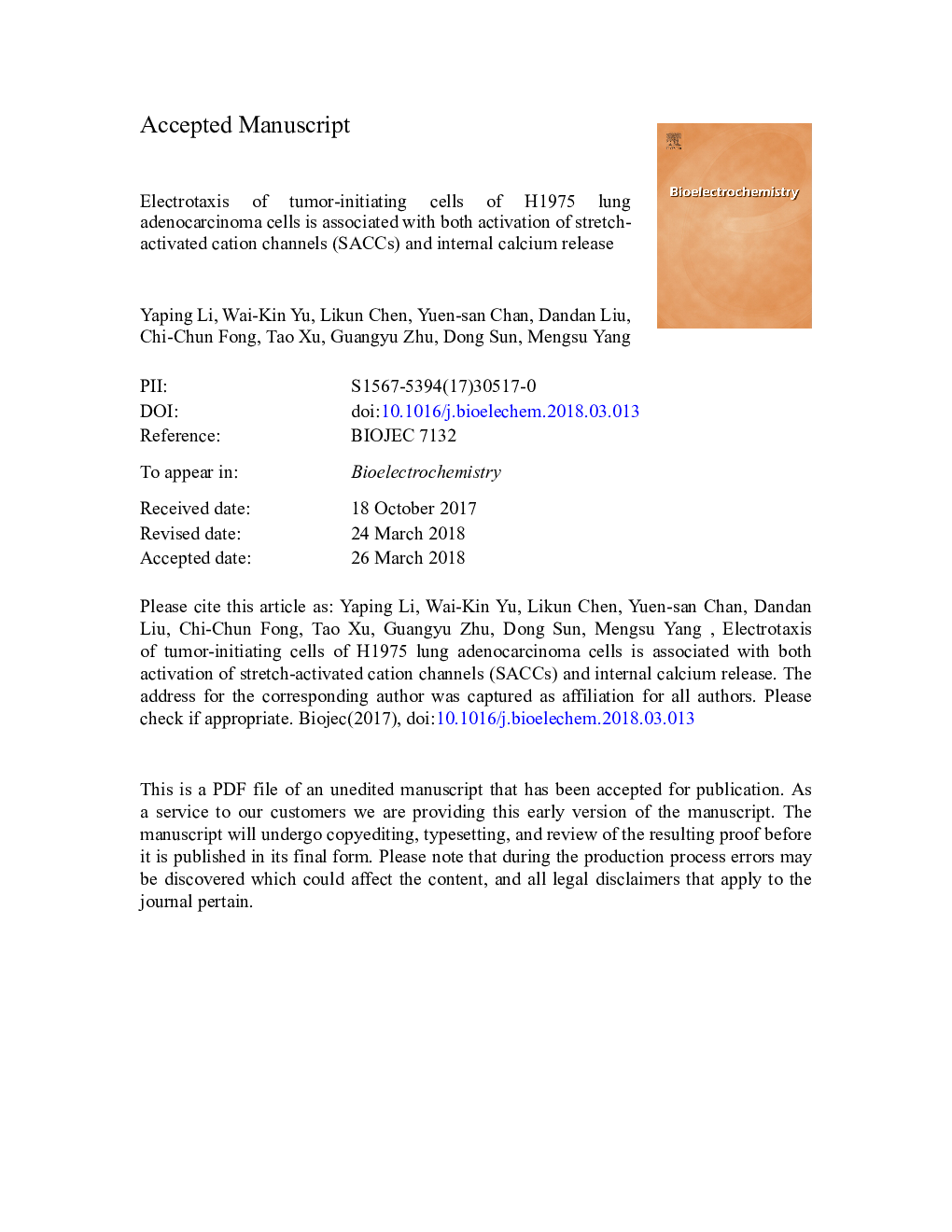| Article ID | Journal | Published Year | Pages | File Type |
|---|---|---|---|---|
| 7704239 | Bioelectrochemistry | 2018 | 29 Pages |
Abstract
The metastatic potential of cancer cells is related to their migratory ability, which is influenced by in vivo microenvironment possessing specific physiochemical factors including electric properties. In the present study, we isolated two different subsets of lung adenocarcinoma H1975 cells, as side population (SP) and main population (MP). SP cells were demonstrated to have cancer stem cell characteristics. Using a microscale device to provide physiological direct-current electric field (dcEF), we investigated the electrotactic responses of the SP and MP cells. The results showed that both SP and MP cells exhibited enhanced cathodal migration ability with actin reorganization and transient intracellular calcium ions ([Ca2+]i) increase under dcEF stimulation. For SP cells, the treatment of either stretch-activated cation channels (SACCs) inhibitor or the blockage of intracellular Ca2+ release could partially inhibited dcEF-activated [Ca2+]i increase, and the concomitant treatment led to a complete inhibition. For MP cells, SACCs activation was entirely responsible for EF-activated increase of [Ca2+]i. All these results suggested that that intracellular Ca2+ activation may be associated with cancer cell tumorigenicity and metastasis.
Related Topics
Physical Sciences and Engineering
Chemistry
Electrochemistry
Authors
Yaping Li, Wai-Kin Yu, Likun Chen, Yuen-san Chan, Dandan Liu, Chi-Chun Fong, Tao Xu, Guangyu Zhu, Dong Sun, Mengsu Yang,
